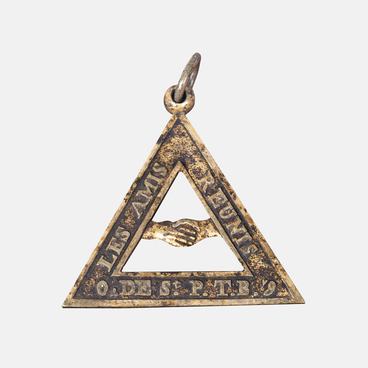The Ulyanovsk Regional Museum of Local Lore named after Ivan Goncharov houses a pocket watch made by the outstanding Bronnikov craftsmen from Vyatka. This is one of the most unusual watches in the history of watchmaking: the case and all parts of the mechanism are made of bone. The watch comes with a bone chain in a special wooden case.
Today, there are only about thirty such watches left in the world, and they are kept in the most prominent Russian museums: the State Historical Museum, the Armory Chamber, the Polytechnic Museum, and the Hermitage. The Vyatka cabinetmaker Semyon Ivanovich Bronnikov was the founder of the dynasty. Like many artisans of this region rich in woods, he made boxes, snuff boxes, cufflinks and other curious objects from wood and burl (a woody growth on a tree). But one day, he came across a pocket watch on a chain and got the idea to make the exact same watch but from wood. Six years later, the master presented his first outstandingly elegant wooden pocket watch with a diameter of 3.5 centimeters. The watch case and the decorated case that came with it were made of burl; the mechanism, dial and chain were carved out of palm wood; the hands were made of honeysuckle, and the spring — of hardened bamboo. Curiously enough, the craftsman made all the smallest details using the simplest, if not primitive, tools.
Soon the opportunity arose to demonstrate the watch at the first Governorate Fair of Industrial and Agricultural Products, held in Vyatka in 1837. The heir to the Russian throne, the future Emperor Alexander II, visited the exhibition and purchased this curious item from Semyon Bronnikov: this marked the beginning of a new unique craft. The business was continued by Bronnikov’s sons — Mikhail and Nikolay, and then by the grandson — Nikolay Bronnikov. The Bronnikovs sought to improve the mechanism and subsequently began to use a steel spring for greater precision. The dial of the wooden watch was decorated with bone, and some screws of the mechanism were turned from bone. For 70 years, three generations of these magnificent craftsmen delighted the world with their pieces. Each watch was a unique work of applied art. They were shown at Russian exhibitions (in Moscow, Saint Petersburg and Nizhny Novgorod) and international ones (in Vienna and Paris). The craftsmen won numerous prizes, medals, diplomas, and cash awards. In 1910, the last watchmaker from the Bronnikov family, Nikolay, moved to Moscow and started working for the Pavel Bure company. The bone watch entered the museum’s collection before 1941.


